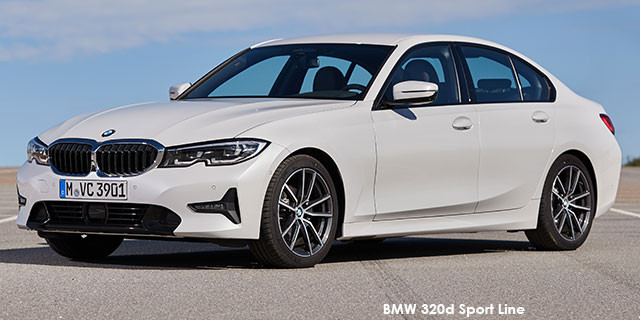Following an impressive first test of the BMW 320d, we try a model with an i-suffix to determine which is best: petrol or diesel...
Eighty-four, the tally out of a possible 100 points scored by the BMW 320d in the recent comparative test against the Mercedes-Benz C220d. It’s the highest mark a test vehicle has received in 2019 so far and just six short of the most generous score we’ve ever awarded (that was 90/100 to a 991.2 Porsche 911 GTS). We enthused about the fantastic chassis balance, roomy interior that’s also better finished than before, plus the powerful yet frugal 2,0-litre turbodiesel engine.
There were criticisms, too. That M Sport-equipped model’s ride was punishingly firm, showing again how crucial it is to do your homework and test drive different models before taking a dizzying dive into a German product’s options sheet, and the engine operates a smidge too vocally at higher revs.
Enter this 330i, which arrived at CAR’s offices sans firmed-up suspension and with an ostensibly more refined petrol-powered four-cylinder under the bonnet. Costing a hair’s breadth more than the 320d (their list prices are identical before CO2 tax is added, the diesel emitting 120 g/km to the petrol’s 139), would this model clinch the title of best current 3 Series derivative?
Coated in Melbourne Red contrasting nicely with the optional (R23 600) Sport Line kit’s Individual High Gloss Shadow Line trim elements, the G20-generation 3 Series looks taut and beautifully balanced, despite now measuring more than 4,7 metres long (interestingly, that’s lengthier than the first two generations of 5 Series).
Inside, this press unit sported Vernasca Black leather at R18 200 – remember the days when a 330i had real leather as standard? – and opinion-splitting maple wood trim at R4 500. We’d ditch both items in favour of laserlights which are fantastically luminous but seldom blind oncoming traffic. The 18-inch alloy wheels measuring an inch larger than the standard items are an appreciated addition, too.
Despite impressive perceived quality, the cabin does have its quirks. The front doors close with a disconcerting thwack which doesn’t exactly suggest sturdiness; the central cubby’s lid appears misaligned when open (it isn’t; that’s just the asymmetrical shape of the centre console); and the standard plastic-topped gearlever looks cut-rate. We’re hypercritical, certainly, but this is a 3 Series and the standard is lofty.
Under the tautly surfaced bonnet beats BMW’s familiar 2,0-litre, four-cylinder turbopetrol engine which, in this latest guise, develops 190 kW from 5 000 to 6 500 r/min, and a 320d-equalling 400 N.m from depths of 1 550 r/min to lofty heights of 4 400 r/min. Like its sibling, the sole transmission option is ZF’s renowned eight-speed torque-converter gearbox with identical – and perfectly judged – ratios. Is there a better automatic gearbox currently in use? We certainly haven’t experienced one.
Bounding to 100 km/h from a clean start in nearly a second less than the 320d, the 330i’s 5,99-second acceleration time should allay some petrolheads’ concerns the illustrious badge no longer denotes a velvety inline-six beneath the bonnet. And if it doesn’t, an M340i is on its way. In-gear, the 330i builds on that initial advantage over the 320d, requiring 0,28 seconds less to accelerate from 80-120 km/h.
It does so with less protest, too. The four-cylinder, while aurally rather noticeably short of a glorious half-dozen, at least stays impressively subdued even as the digital rev needle hurries counter-clockwise (why?) to the red line. Vibration at idle is virtually non-existent and, in sport+ mode, there’s an artificially augmented yet pleasingly fruity burble and pop to the exhaust note.
So far, so very good. What of the ride, then? Well, here’s where it gets interesting. This test vehicle featured neither the M Sports suspension (R5 800), nor Adaptive M suspension at R15 400, instead sitting on standard dampers featuring BMW’s trick lift-related control system said to offer constant, variable bump-absorption qualities. It was all the better for being simpler.
Unquestionably, the ride is still only just on the acceptable side of too firm, but there’s real polish in the manner with which the 3 Series smoothens the worst surface scars. We’ve yet to try a model on the adaptive setup – experience with this system on the 5 Series has confirmed it softens the ride – but can confidently say the standard arrangement is miles better than the M Sport option. So equipped, the 3 Series loses none of the firmer system’s fantastic mid-corner balance and adjustability, nor any of its immediate turn-in or rear-end playfulness. If driving thrills are top of your list when shopping for a German premium-midsize sedan, only BMW can service that desire.
TEST SUMMARY
By pricing its mid-range diesel and petrol models identically, BMW SA has launched a fascinating experiment to gauge buyers’ preferences. Both options have their advantages: more refined manners in the case of the 330i; frugality on the side of the 320d (it sipped a mere 5,10 L/100 km on our fuel run) ... and drawbacks: heavier consumption for the petrol at 7,50 L/100 km; and grumblier operation by the oil-burner.
So, which one is better? While we appreciate the 320d’s myriad qualities, the CAR team felt the 330i’s superior performance and refinement earn it our vote. That’s 85/100, a new high for 2019.
ROAD TEST SCORE

|
Original article from Car
See Full BMW 3 Series Sedan price and specs here








